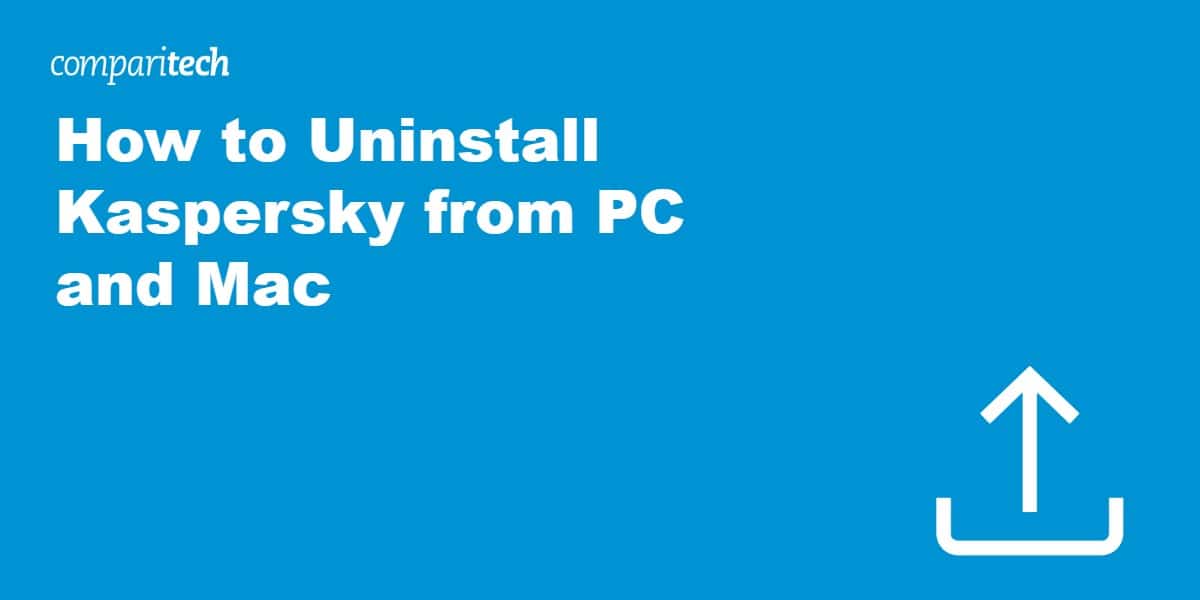Kaspersky is a well-known name in cybersecurity, offering a range of antivirus and internet security solutions for individuals and businesses. While Kaspersky products provide robust protection against malware, you might decide to try a different provider due to performance concerns, subscription costs, or other preferences.
This guide will walk you through removing Kaspersky software from your Windows or Mac computer. We’ll cover standard uninstallation methods and the official Kaspersky Removal Tool for the cleanest file removal.
How to uninstall Kaspersky fast
This is the quickest way to remove Kaspersky from your Windows device, but it might leave behind some files. Use the Kaspersky Removal Tool (detailed later) for the most complete removal.
- Right-click the Kaspersky icon in your taskbar and choose Exit.
- Open the Windows Start menu, navigate to Settings, then click Apps.
- Look for Kaspersky Antivirus, Kaspersky Internet Security (or other Kaspersky products), and select Uninstall.

- Complete the uninstallation process by following the instructions.

- Restart your computer to finish.

How to cleanly uninstall Kaspersky using the KAV Removal Tool
For the most complete removal, use Kaspersky’s official Removal Tool:
- Download the KAV Removal Tool from Kaspersky’s website.
- Run the tool, enter the captcha code displayed, and click Agree.
- Choose the Kaspersky product you want to uninstall and click Remove. It will scan for the installation and remove all files.
- Click OK after removal, then restart your computer to complete the process.
How to uninstall Kaspersky from Mac
Uninstalling Kaspersky from Mac is simpler:
- Open Finder and click Go from the top menu bar.
- Choose Applications.
- Drag the Kaspersky app to the Trash.
- Empty the Trash to complete the process.
Advanced Cleanup: Removing Residual Registry Entries (Caution!)
Editing the registry can have serious consequences if done incorrectly. Create a system restore point before proceeding; only attempt this if you’re comfortable with system file changes.
After uninstalling Kaspersky, some leftover registry entries may remain. Here’s how to manually remove them:
- Open the Registry Editor (search for “regedit” in the Start menu).
- Warning: Incorrect registry changes can cause system instability. Proceed at your own risk.
- Navigate to the following registry keys:
- HKEY_LOCAL_MACHINE\SOFTWARE\KasperskyLab
- HKEY_CURRENT_USER\SOFTWARE\KasperskyLab
- Right-click on any KasperskyLab keys and select Delete.
- Close the Registry Editor and restart your computer.
Note: These are general locations. Specific registry keys might vary depending on the Kaspersky product and version you had installed.
Important: If you’re unsure about removing registry entries or experience any issues following the process, it is strongly recommended that you contact Kaspersky support or use a dedicated registry cleaner tool designed for antivirus remnants.
Troubleshooting Common Uninstall Errors
Antivirus software like Kaspersky can be particularly stubborn. Here’s how to resolve some common issues:
- Error: “Kaspersky is still running.” Make sure the program is fully closed. Use the Task Manager (Ctrl + Shift + Esc) to end related processes if necessary.
- Error: “Files cannot be deleted.” This could also indicate active processes. Use Task Manager to stop them before rerunning the uninstaller.
- Error: Uninstaller errors. Ensure you’re using the correct KAV Removal Tool. If issues continue, contact Kaspersky support.
Kaspersky Products: Uninstall Nuances
The uninstall process differs slightly depending on whether you have Kaspersky’s basic antivirus or one of its more comprehensive security suites:
- Kaspersky Antivirus: The core antivirus product is the most straightforward to uninstall, typically utilizing the standard Windows uninstallation method or the KAV Removal Tool.
- Kaspersky Internet Security, Kaspersky Total Security, etc.: Higher-tier security suites often integrate more deeply into your system. If the usual uninstall fails, the KAV Removal Tool becomes essential. It’s also a good idea to consult Kaspersky support for guidance, as these suites might have additional components to remove.
Important: Regardless of the Kaspersky product you’re uninstalling, ensure you have an alternative antivirus solution installed or Windows Defender enabled before removing it to protect your system from threats.
Great Kaspersky alternatives
Looking for a replacement? Consider these excellent choices:
- Bitdefender Antivirus Plus: Powerful security with advanced features like ransomware protection and a password manager.
- Norton 360: Robust all-round protection with features like a secure VPN, parental controls, and cloud backup.
- ESET Internet Security: User-friendly and offers robust protection with minimal system impact.
See also:
- How to uninstall PC Matic
- How to uninstall TotalAV
- How to uninstall ESET
- How to uninstall Panda Dome
- How to uninstall VIPRE
- How to uninstall Surfshark Antivirus
Uninstall Kaspersky FAQs
Why should I uninstall Kaspersky?
Reasons include switching to a different antivirus, performance issues, or privacy concerns.
Is it safe to uninstall?
Yes, but ensure you have another security solution before removing Kaspersky, such as Microsoft Defender.
Will this cancel my Kaspersky subscription?
No, you’ll need to cancel separately through Kaspersky’s support.
What if the uninstallation has problems?
Try the KAV Removal Tool again or contact Kaspersky support directly.


